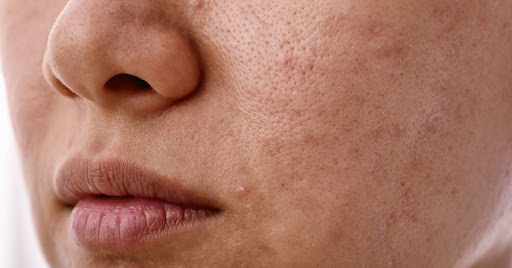How to Prevent Hair Fall In Monsoon
6 min read
By DocGenie , Published on - 08 August 2022
Reasons for Increased Hair Fall During Monsoons
In Indian society, hair is the crowning glory of our existence. And although hair is just a dead keratin layer, i.e, a type of protein, we are all still so emotionally attached to our hair’s well-being that even the slightest indication of falling hair leads to emotional distress and mental agony.
Human hair is programmed by our genetic make-up for its texture, thickness and even to the length that it will eventually grow. For example, some people dream of having incredibly long, shiny, and healthy hair. However, if you have a certain kind of genetic make-up, whatever you may try to have knee length hair, your hairs will glow only to a fixed length and then fall.
In other words, with hair, running after the wrong or futile goal is a very real possibility. Therefore, an individual’s aim should be to have clean and healthy hair, instead of a particular length or even a particular kind of volume or hair count.
The Cyclical Nature of Hair Growth and Fall - Anagen, Catagen, Telogen
The hair root is the living structure of hair and grows through cell multiplication - which means that at some point, those cells will stop multiplying as well. Believe it or not, hair fall is actually a daily phenomenon which we all experience to some degree every day. In some seasons, such as the monsoon, we experience an excess of hair fall because the human body is designed to adapt to the environment around us.
The Anagen Catagen Phases
Human hair growth is cyclical in nature - and every single hair on our body goes through its own individual cycle of birth, growth, rest, and fall. During the growth phase, which is called Anagen, hair grows at the rate of 1 cm/month. And yet, all hair growth - even on the same human body - is not equal. The anagen phase of hair actually differs for different regions of the body? If that sounds just a tad bit unbelievable, consider the fact that with young males, the duration of hair growth ranges from 2-5 years for head hair, but it changes to 4-14 weeks when it comes to moustaches.
On the other hand, some hair growth comes with certain body conditions and phases of all. For example, we see quite often that pregnant women, whose bodies experience an abundance of hormones, the growth phase receives a boost, leading to healthier and more voluminous hair.
When the anagen phase ends and the hair stops growing any further, it enters the catagen phase, which lasts for approximately 2-3 weeks.
The Telogen Phase Monsoon Hair Fall
Finally, hair growth comes to a period of rest which lasts for approximately 3 months and at the end of the telogen phase, old fair begins to fall and new hair begins to grow.
What’s important to note here is the fact that all hair on the body does not grow together. At any given point of time at least 13% of hair on the body is in the telogen phase - which means that older hair is also falling out.
“Hair fall of about 100 hairs a day is absolutely normal” says Dr. Shehla Agarwal, Dermatologist at DocGenie. “Since the season and the environment also plays a huge part in hair fall, about 20-25% of hair loss occurs in the telogen phase when the monsoons come to visit. Very often, this is an alarming occurrence for people and they experience a fair amount of anxiety.”
But this is normal, stresses Dr. Shehla. “We see more anxious people than actual hair fall every monsoon season. If you’re one of the many people who see a sudden increase in hair fall during the rainy season, do not be alarmed. Your hair roots will very likely recover by October and a new hair growth cycle will begin again.”
But how do we recognise telogen hair fall? According to Dr. Shehla, if you notice a majority of your falling hair has a white tip, you’re losing telogen hair. Again, nothing to be alarmed about.
How to Reduce Hair Fall ?
We do understand that being on the receiving end of knowledge does not take away the worry of what you’re dealing with. If, after learning about hair growth cycles, you’re still feeling anxious about the hair loss you’re experiencing during the monsoons, you can still take a few steps to ensure that you’re able to minimise unnecessary hair fall.
“More than the optics of your hair, it’s important to ensure you keep your hair and scalp clean and healthy,” says Dr. Shehla. “An infection like dandruff is a bigger issue and you’ll have to ensure proper health hygiene so that dandruff does not add to your hair loss problems.”
And don’t be afraid to shampoo your hair. “It’s actually a fairly common misnomer that shampooing your hair will lead to even higher hair loss, but that’s not always true.” But shampooing your hair is essential for avoiding extra oil and grease build-ups on your scalp.
Shampooing is also an excellent way to assist your body in letting go of old growth. “When hair is washed, it absorbs water, becomes heavy, and so the strands of hair that were already ready to fall are jiggled out easily. It’s not an increase in hair fall as much as it is a cleansing.”
Other Small Precautions to Avoid Monsoon Hair Fall
- Avoid combing your hair too frequently
- Avoid combing wet hair as they tend to fall more. Remove hair tangles with fingers, let your hair dry and then comb through.
- Do not scrub with a towel to dry your wet hair. Softly dab dry instead..
- Oil your hair when you can, since oiling rejuvenates the scalp through the massage.
- Avoid tying your hair into tight ponytails.
Most importantly, don’t add on to your stress load. “Stress leads to hair fall and more diseases than we can keep track of” says Dr. Shehla. “With a few simple precautions and the right action steps, you’ll be able to control your monsoon hair loss pretty well. You’ll recover by the beginning of the festive season and you won’t be going bald.”
To schedule a consultation with our dermatology team, visit www.docgenie.in.
Author Details

Dr.Rachna Kucheria
MD (Community Medicine) AIIMS New Delhi
MD (Family Medicine) USC California
Obesity Medicine Certification The American Board of Obesity Medicine
30+ Years of experience


